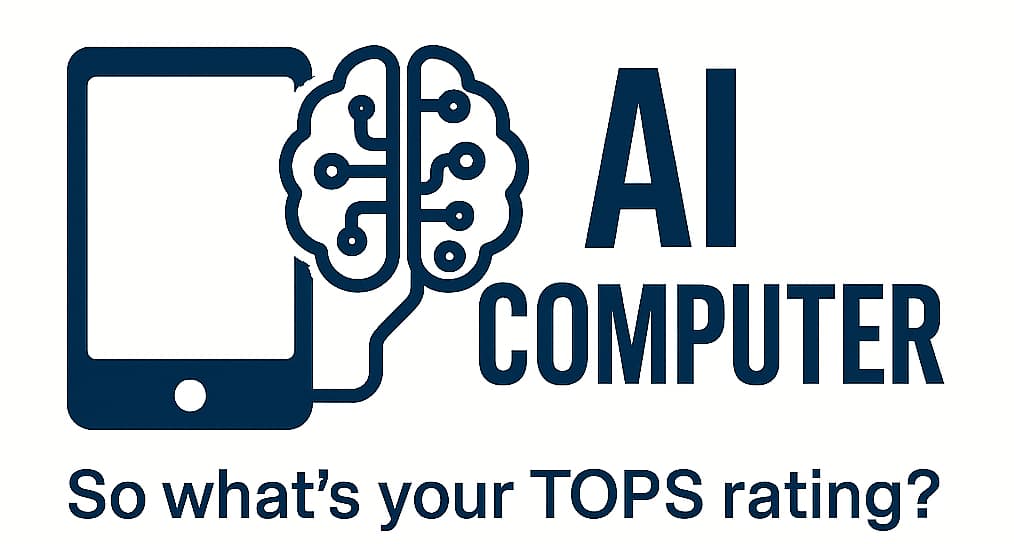
Welcome to Computer AI
Exploring the future of modern Vending that uses AI
The Industry Group by Craig KeefnerAbout AI Computer
Computers used in kiosks, digital signage and more self-service applications are changing. Historically the entry level might be a Celeron CPU (or Android).
- This week LG announced new self-order kiosk with complete accessibility and notably it also supports Soundhound voice ordering. The entry level CPU is a Celeron J6412 at 2 Gh.
- In digital signage we have more more emphasis on AI assist. And with Soundhound releasing Vision AI shortly that will only accelerate. Driving four HDMI displays while providing AI computational power is difficult for your typical i7 CPU. With a TOPS rating of under 1.00 and costing $900-$1200, using the i7 is not "future proofing" your system. A better option, and for less cost, would be the Giada N-series miniPC. The TOPS rating is over 90. Link to Giada AI PC
- Digital signage is a dynamic range of computing for sure. In some cases the $60 Raspberry PI does the job. Amazon launched the Signage Stick in August 2025. See Digital Signage Blog
- Surge in Thin Client, Media Players and MiniPCs -- edge computing is the hot phrase. And if we cut the internet connection are you dead in the water? We track that at thinclient.org
- Where is NVIDIA? -- good question. They started in self-service but opted to go the Avatar route. Avatars are 99% creepy as a rule and do not invite. They have bigger fish to fry like Anthropic and Meta.
Modern computing is rapidly transforming with the integration of AI, leading to smarter, more responsive machines and seamless user experiences. For basic single-purpose kiosks or signage, a Celeron may suffice. But as applications demand richer multimedia, AI, and seamless user interaction, miniPCs with high TOPS ratings provide the power, flexibility, and reliability businesses need to deliver modern experiences and support future growth—making them a smart choice for most new deployments in retail, hospitality, transportation, and beyond.
Why High-TOPS MiniPCs Make More Sense for Modern Applications
- Performance for Multimedia & AI: MiniPCs with high TOPS ratings deliver far greater processing capability, especially suited for tasks like real-time video processing, AI-driven analytics, complex graphical interfaces, and responsive user experiences—far beyond what typical Celeron chips offer. This is essential for modern digital signage and kiosks that handle high-res video, animated content, or AI-powered features (e.g., facial recognition, data analytics, voice assistance).
- Low Power Consumption: Modern miniPCs combine strong computing power with energy efficiency, reducing operational costs—a critical factor for systems that operate 24/7, like kiosks and signage solutions.
- Form Factor & Reliability: MiniPCs are compact for easier installation in tight, built-in spaces like counters or behind displays. Many models are fanless and built for industrial reliability, supporting long-term use in demanding conditions (extended temperature ranges, resistance to dust, vibration, etc.).
- Remote Management & Connectivity: High-performance miniPCs include comprehensive remote management and flexible I/O options, allowing for remote updates, hardware integration, and real-time monitoring needed in large-scale deployments or managed networks.
- Scalability for Advanced Uses: As digital signage and kiosk applications grow in complexity and interactivity—from AI-based retail analytics to seamless POS integration—high TOPS miniPCs provide headroom for future upgrades and expanding software requirements.
Resources
- Kiosk Industry Group — all things kiosks...
- AI Computers Thin Client — Media Players and MiniPCs...
- Retail Automation — lockers & robotics & vending...
- Vending in Retail — Modern vending...
- Digital Signage — Displays and Touchscreens...
